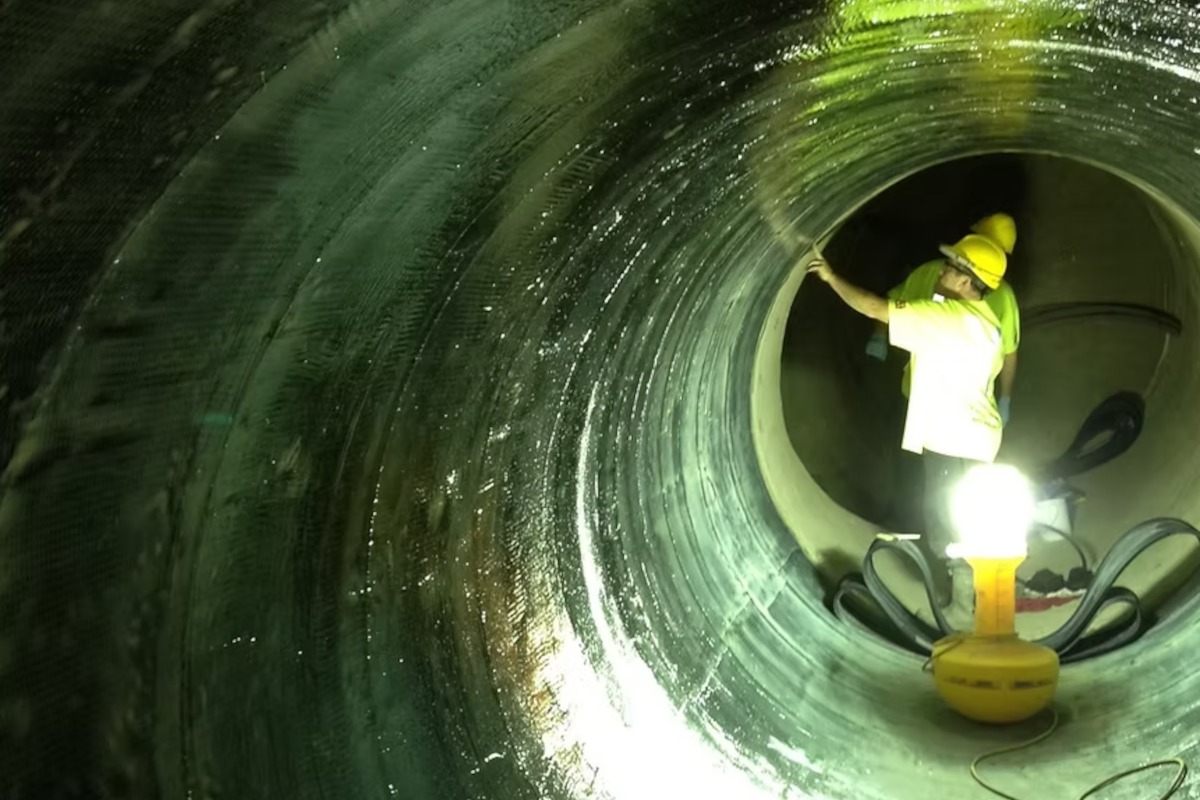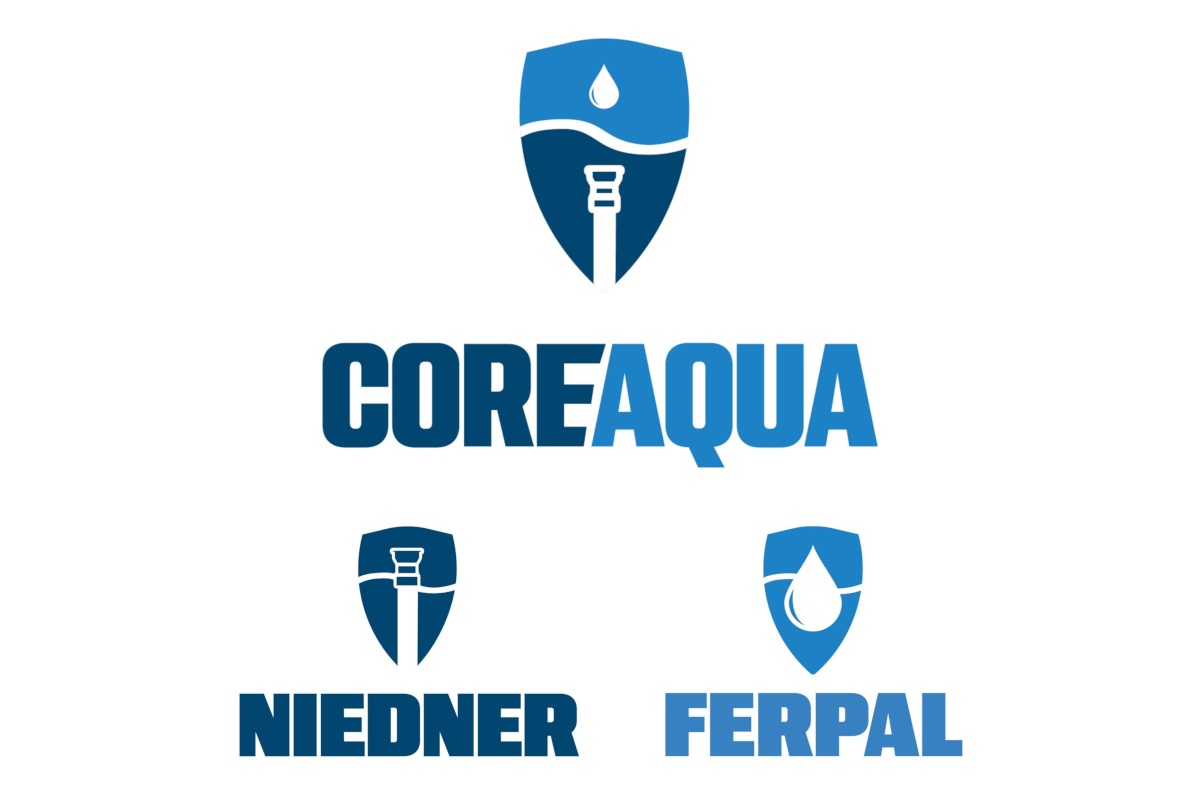
Sliplining in Edmonton: EPCOR Project Rehabilitates Groat Road Sewer
In June 2012, the City of Edmonton Drainage Services (now EPCOR Utilities, Drainage Services) conducted a visual inspection of the three sections of the Groat Road storm trunk sewer. The visual inspection identified concerns with the condition of these three segments of storm sewer.
As the sewer is more than 60-years-old, it surpassed the expected service life for a galvanized corrugated metal pipe (CMP) and required rehabilitation. Constructed between 1953 and 1955, the Groat Road storm trunk sewer consists of large diameter corrugated metal panels that were bolted together to form the trunk. The storm trunk alignment generally follows Groat Road, between 118 Avenue and the North Saskatchewan River.
The characteristics and the condition in each of the three sections of the storm trunk — 118 Avenue, west of Groat Road; 118 Avenue, east of Groat Road and along Groat Road — were investigated. A detailed inspection of the storm trunk was conducted in November 2014 to assess the condition of the pipe and the extent of the damage to the bedding around it.
Phase 2 of the rehabilitation work includes sliplining Part A – 1,774 m of 1,350 mm diameter glass fiber reinforced pipe and Part B – 2,139 m of 1,800 mm diameter glass fiber reinforced pipe in the remaining length of the trunk on Groat Road between 107 Avenue and 118 Avenue. It also includes the upstream section of the trunk on 118 Avenue, from 129 Street to 142 Street and on 142 Street south of 121 Avenue.
The section of existing storm trunk (corrugated metal pipes) running along 142 Street, south of 121 Avenue to 118 Avenue is 1,727 mm in diameter, has a slope ranging from 0.3 to 0.4 per cent and a length of 0.32 km. The depth of cover to the top of the storm trunk ranges from approximately 6 m to 8 m.
The section on 118 Avenue from 142 Street to Groat Road is also 1,727 mm in diameter. This section has a slope ranging from 0.3 to 0.5 per cent. The length of this section is 1.1 km and has a depth of cover to obvert ranging from approximately 8 m to 9 m.
The section of the Groat Road Storm trunk running under 118 Avenue from Groat Road to 129 Street is 1,727 mm in diameter and has a slope of 0.4 per cent. The length of this section is 0.38 km. The cover depth to the pipe obvert for this section ranges from 6.5 m to 9 m.
The section on Groat Road, between 107 Avenue and 118 Avenue is 2,337 mm in diameter and has an approximate slope of 0.4 per cent. The length of this segment is 2.1 km. The depth of cover to the pipe obvert ranges from 9 m to over 15 m.
Why Trenchless?
Groat Road and 118 Avenue are both high traffic areas in the province’s capital city. Groat Road has an average weekly vehicle count of more than 36,000 vehicles and 118 Avenue has approximately 17,000. The project area is adjacent to a dense residential and commercial area. Combine those with an average depth of cover of 8 m, and it was soon realized that open-cut construction methods would not be possible.
RELATED: Major Milestone: Sewer Installation Is the Largest Capital Project in St. Albert’s History
A request for proposal (RFP) for design-build of the project was opened to market. The RFP required respondents to propose a suitable trenchless method of construction for this project. Drainage Services received proposals with various proposed methods of trenchless construction: CIPP, CCCP, spiral winding and sliplining. However, the proposal with sliplining method of construction from Shanghai Construction Group (Canada) Corp. (SCG) was accepted, and a contract was executed for the project.
“The significant benefit is that sliplining construction allows the construction crew to work in a live sewer line. And it does not require setting up expensive bypassing system,” said a project manager at SCG.

Equipment Selection
Prior to the construction, SCG completed a condition assessment work that included 3D scanning of the curvature, mandrel testing and invert preparation. Armed with this information, SCG made engineering calculations, studied past sliplining projects and opted to use an Akkerman SLS 50/100 sliplining system for the rehabilitation project. Using this machine allowed SCG to work in live conditions and work bidirectionally.
“The capability of sliplining pipes in live drainage line has totally removed the bypass system requirements, which would be quite challenging if other rehabilitation methodologies were used. And the provision of the retention winch and cable enables the sliplinning machine to hold the liners in place even during high flow season,” the project manager said. “Using this bidirectional capability, we were able to push more than 800 m of pipe using single shaft construction. More than 400 meters in each direction. We were able to reline 800-meter section along 118 Avenue with seven-days of pushing only.”
RELATED: Picking the Brain of K.C. Er

Challenges
Work commenced in October 2018. As with any construction projects, the crew faced challenges.
The first challenge came in the form of the condition of the host. The host pipe for sliplining should be generally smooth, but due to the condition of the corrugated metal panels, sliplining would be, “arduous.” To negate this effect, the contractor permanently affixed tracks to the invert of the host pipe. The Hobas pipes were then slid along these rails for the length of the project. It was proved to be an effective way to slipline pipes in corrugated metal pipes.
The second challenge the contractor faced was traffic management for the project. As mentioned above, 118 Avenue and Groat Road are both heavily trafficked roadways. By using the sliplining approach, SCG was able to limit full road closures and reduce lanes in the worksite area to manage traffic flow. A total of five shafts were built along 118 Ave to complete the Part A project.
The third major challenge came in spring 2019 when the winter’s ice melted leading to high flows inside the newly-installed pipe. Though the liner was anchored, crews used the retention winch on the Akkerman machine and wood wedges to hold the liners in place before the annular space between the FRP pipes and the corrugated metal pipes were filled.
RELATED: HDD Contractor Profile: Hot Rod Directional Boring
The Part A scope of project — sliplining of 1,774 m of trunk with 1,350 mm diameter of glass fiber reinforced pipe, is complete. The Part B scope of the project — sliplining of 2,139 m of trunk with 1,800 mm diameter pipe is in progress.
Mike Kezdi is managing editor of Trenchless Technology Canada.




